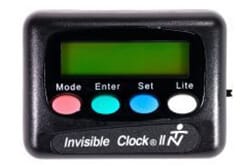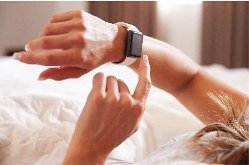Bedwetting, a common challenge for countless families, can cast a shadow over childhood. Known in the medical world as nocturnal enuresis, this condition is more than just a laundry problem; it can deeply impact a child’s self-esteem and social life. Parents often find themselves in a cycle of trying various strategies, from fluid restriction to scheduled nighttime waking, with little to no lasting success. Fortunately, a proven, technology-driven solution exists that empowers both children and parents: the Bedwetting Alarm. This is not merely a device for detecting wetness, but a sophisticated tool for conditioning the brain to achieve lasting dryness.
This in-depth guide will navigate the world of bedwetting alarms, from the science behind their success to the diverse options available for every age and need, helping your family find a clear path to confident, dry nights.
The Science of Sleep and Bladder Control: Why Bedwetting Happens
To effectively solve bedwetting, it is essential to first understand its physiological roots. In most cases, nocturnal enuresis is not a behavioral problem but a developmental delay in the communication between the bladder and the brain. While a child is asleep, the brain fails to recognize the signals from the bladder indicating it is full. This is especially true for children who are very deep sleepers. The result is an involuntary release of urine during the night.
The primary objective of any effective bedwetting treatment is to forge a stronger, more reliable connection between the brain and bladder. This is where Bedwetting Alarms come into play. They are designed to facilitate a learning process, teaching the brain to respond to the body’s natural cues. Through consistent use, the alarm conditions the child to associate the sensation of a full bladder with the need to wake up, eventually leading to independent waking before an accident can happen. This method, endorsed by pediatricians, targets the core issue, offering a permanent solution.
The Inner Workings of a Bedwetting Alarm: A Simple, Powerful System
The technology behind bedwetting alarms is both straightforward and remarkably effective. At its core, an alarm system consists of a moisture-detecting sensor and a unit that produces an alert. The sensor is typically placed in the child’s underwear or on a mat on the bed. The alarm unit is either attached to the child’s pajamas or set up at the bedside.
The instant the sensor detects the first hint of moisture, it sends a signal to the alarm unit, which immediately activates. The alarm then wakes the child using a combination of sound, vibration, and sometimes light. This prompts the child to get up and use the toilet. By repeating this process over several weeks, the child’s brain learns to connect the feeling of a full bladder with the alarm’s alert. Gradually, they begin to wake up earlier and earlier, until they are able to wake on their own before the alarm is needed. This is the key to achieving nighttime continence and is a proven method to How to stop bedwetting.
Finding the Right Fit: A World of Bedwetting Alarm Options
Choosing the right bedwetting alarm is crucial for success. The ideal alarm will be comfortable, reliable, and tailored to the specific needs of the user. With a wide variety of alarms on the market, it is important to understand the different types available to make an informed decision for your family.
Tailored Solutions for Every Age and Sleeper
The journey to dry nights is not a one-size-fits-all process. Children, teens, and adults have different needs, and the type of alarm you choose should reflect that. For younger children, comfort and ease of use are key. Bedwetting alarms for children are often designed to be lightweight and simple to operate, encouraging the child to take an active role in their treatment.
As children grow into their teenage years, their needs may change. Bedwetting alarms for teens often feature more discreet designs and more powerful alerts to accommodate deeper sleepers. These alarms provide teens with the independence they desire while still offering the effective treatment they need.
Bedwetting is not limited to childhood, and there are effective solutions for adults as well. Bedwetting alarms for adults are designed with comfort and discretion in mind, often utilizing bedside alarm units and comfortable sensor mats to provide a non-intrusive and effective solution.
Addressing Specific Needs: Deep Sleepers and Special Needs
Certain individuals require specialized alarms to ensure success. For those who sleep very soundly, standard alarms may not be sufficient. Bedwetting alarms for Deep Sleepers are equipped with extra-loud sounds, strong vibrations, and multiple alert tones to rouse even the most determined sleeper.
Similarly, children and adults with special needs may benefit from alarms designed with their unique requirements in mind. Bedwetting alarms for Special Needs often feature user-friendly designs, enhanced safety features, and comfortable bedside options to ensure a positive and successful treatment experience.
Beyond the Alarm: A Comprehensive Strategy for Success
While a bedwetting alarm is a powerful and effective tool, it is most successful when used as part of a comprehensive strategy. By combining the alarm with positive reinforcement and practical lifestyle adjustments, you can create an environment that fosters success and builds your child’s confidence.
One of the most important elements of a successful bedwetting treatment plan is consistency. It is crucial to use the alarm every night to ensure the brain-conditioning process is not interrupted. Patience and support are also key. Bedwetting is not your child’s fault, and they need your encouragement throughout the process. Celebrate dry nights with praise and positive reinforcement to keep them motivated. A progress chart can be a helpful visual aid, allowing your child to see their progress and stay engaged in the treatment.
In addition to using the alarm, there are several practical steps you can take to support your child’s journey to dry nights. Encourage them to use the bathroom right before bed, and consider limiting fluids an hour or two before sleep. It is also helpful to have waterproof mattress pads on hand to minimize laundry and protect your mattress.
By combining a high-quality bedwetting alarm with these supportive strategies, you can provide your child with the tools and encouragement they need to achieve lasting nighttime dryness and the boost in self-esteem that comes with it.
Related Articles
Back-to-School Checklist: A Parent’s Guide to Managing Bedwetting
Bedwetting Alarms vs. Medication: Which Offers a True, Long-Lasting Results?
Why Pediatricians & Urologists Recommend Bedwetting Alarms First







 Our #1 Top SellerIdeal for Daily Use
Our #1 Top SellerIdeal for Daily Use Premium Quality BeddingSoft and Comfortable
Premium Quality BeddingSoft and Comfortable Premium Quality BeddingLarge Urine Absorption
Premium Quality BeddingLarge Urine Absorption AFFORDABLE PRICECHANGE DAILY AS NEEDED
AFFORDABLE PRICECHANGE DAILY AS NEEDED
 Sleek, Stylish and Affordable Watch
Sleek, Stylish and Affordable Watch Multi-Function Watch with Numerous Features
Multi-Function Watch with Numerous Features Recommended watch for teens and adults
Recommended watch for teens and adults Perfect for medication and other reminders
Perfect for medication and other reminders











